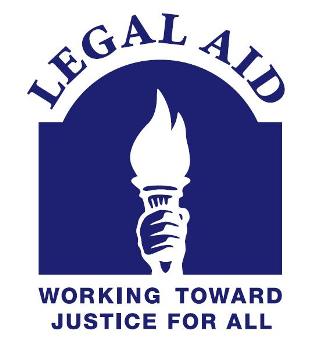The difference between legal professional fees and court awarded costs and an experience with in trying to pay the costs from a legal aid case back to the LAC.
 This was one of the very first lessons I learned about the Bar Council Legal Aid Centre (Kuala Lumpur) (‘LAC’). I found it out like this: The case of Mr. Wong (not his real name) was one of the two cases that I first took up from the LAC in my first year of practice. Mr. Wong was being sued by KTR Factors (not the company’s real name) over several invoices for leather shoes that were factored to them by leather goods making firm. After a full trial before Puan Rosbiahanin bt Ismail, who reprimanded me often throughout the proceedings due to the frequency of some of my unreasonable objections against the Plaintiff’s supporting documents, we eventually succeeded in having the claim dismissed with costs. We eventually agreed on the costs payable by KTR Factors.
This was one of the very first lessons I learned about the Bar Council Legal Aid Centre (Kuala Lumpur) (‘LAC’). I found it out like this: The case of Mr. Wong (not his real name) was one of the two cases that I first took up from the LAC in my first year of practice. Mr. Wong was being sued by KTR Factors (not the company’s real name) over several invoices for leather shoes that were factored to them by leather goods making firm. After a full trial before Puan Rosbiahanin bt Ismail, who reprimanded me often throughout the proceedings due to the frequency of some of my unreasonable objections against the Plaintiff’s supporting documents, we eventually succeeded in having the claim dismissed with costs. We eventually agreed on the costs payable by KTR Factors.
This is an opportune time to discuss the difference between a lawyer’s professional fees and the court awarded costs. Not many lay people understand this important distinction. Professional fees are what a lawyer charges to do something. It is not remotely connected to the court awarded costs that are usually given to the successful litigant by the court to cover his expenses. Although ideally the court costs should cover the professional fees spent that has never been the case. Let me illustrate this with an example. Company X wants an injunction against Company Y. Say they hire me. I charge them RM 30,000.00 for it. We win it. The court may order Company Y to pay costs to Company X assessed at RM 15,000.00. So even if Company X wins, they will be out of pocket by about RM 15,000.00. Yes, this is an appalling state of affairs, but no amount of lawyer bitching will change this. That is at the High Court.
In the subordinate courts, costs are not usually assessed – they are usually fixed according to scale. That scale has not changed since the Subordinate Court Rules 1980 were introduced in 1980. 31 years later, we are still using the same cost rates. There has been no attempt to keep the costs consistent with the rate of inflation. There has been no sensible explanation for this either from the Judiciary or the Minister in the Prime Minister’s department in charge of legal affairs.
The courts and government fail to comprehend that awarding low costs both at the High Court and subordinate courts prejudices the litigants – not the lawyers. Why should a successful party who has won his case have to still bear the legal expenses for it (assuming he has not done something silly to deprive himself of being awarded with costs)? They also fail to appreciate awarding low costs to successful litigants has a negative effect on access to justice. If a litigant is always going to be losing out financially in bringing a case, they will be less able to either initiate or sustain a case. Let me illustrate this.
Company A supplies goods. It supplies RM 10,000 worth of goods each to Company B, C, D, E, F and G. They all do not pay. Company A initiates legal action against all of them and is successful against all of them. Company A pays legal fees of RM 2,500 per case. The court awards Company A only RM 1,500.00 per case. Now let’s do the math: (6 cases x RM 2,500 per case) – (6 cases x RM 1,500 per case) = RM 6,000.00 is what Company A would have to bear as legal expenses in having to bring their case despite being successful. So Company A is a winner from the legal standpoint but it is a loser from a financial standpoint. This will be even more painful if you are a personal litigant because the money will be out of your pocket.
This is one reason why I often encourage settlements. Sometimes it is just not worthwhile fighting a case even if you are likely to win. As they say, winning isn’t everything. This is especially so in litigation.
Now that I have explained the distinction, let me return to the main.
It is a term as well as the policy of LAC that all costs obtained in a civil suit are supposed to be refunded to the LAC after taking deducting the disbursements and expenses incurred by the volunteer lawyer (civil cases only). Neither the LAC client nor the volunteer lawyer is supposed to keep the left over costs. After apportining some of the costs to Mr. Wong for his expenses and the legal fees he paid earlier (he hired a law firm earlier but then ran out of money when his business went belly up) and deducted my advances, there was a balance of RM 2,458.00. This was to be paid over to the LAC.
When I inquired with the LAC as to whom the cheque was supposed to be made out to nobody seemed to know. I naturally expressed surprised at this and was sheepishly informed it was not a query the LAC was often confronted with, if at all. After several inquiries were made, they called me back and told me it was the Bar Council, Malaysia. Since then a resolution of 6 other civil cases (at various stages of proceedings) I concluded have yielded costs totalling RM 9,384.00 to the LAC.
I hope it has improved since then and that the LAC has recovered much more since then.
Fahri Azzat has a problem with the way the courts purport to exercise its discretion on the issue of costs – there is no rhyme or reason, and discretion of judges is absolute. He believes that the courts should be more attuned to inflationary costs in awarding costs to the successful litigant.
